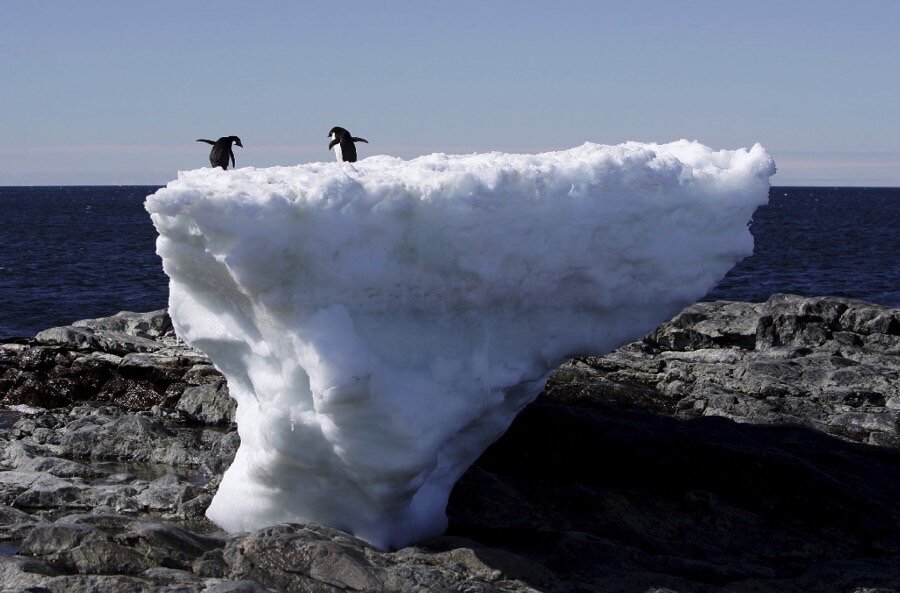UN agency announces record highs on Antarctica as scientists push for more data
Loading...
On March 24th, 2015, scientists at Argentina’s Esperanza research base in Antarctica recorded the day’s high at a balmy 63.5 degrees Fahrenheit (17.5 degrees Celsius). Yesterday, the World Meteorological Organization (WMO) recognized that reading as the highest-ever temperature on the Antarctic continent.
Esperanza sits near the northern tip of the Antarctic Peninsula, not far from the 60th parallel that demarcates the “Antarctic region.” Balmy temperatures at these latitudes aren’t unheard of. A research station on nearby Signy Island set the overall region’s highest record, of 67.6 degrees Fahrenheit (19.8 degrees Celsius) in January 1982, according to the WMO, an agency of the United Nations.
Wednesday’s record announcements come as more locations around the world – including The Christian Science Monitor’s hometown of Boston – are breaking seasonal temperature records. Scientists say that to understand whether Antarctica’s newly-established records fit a global pattern of warming climates, however, they need more data from the continent.
“It is possible, indeed likely, that greater extremes can and have occurred in the Antarctic Region,” the WMO said in a statement. “As with all WMO evaluations, the extremes are identified based on only those events with available high-quality ground-based data.”
Ground-based weather stations – along with satellites, monitoring buoys, and balloon-launched radiosondes – have given today’s scientists an unprecedented look at Earth’s weather patterns. The National Oceanic and Atmospheric Administration's National Centers for Environmental Information can call up temperature, precipitation, and other data from about 1,600 locations in the United States, and more than 10,000 volunteer observers, according to the Centers' website.
But Antarctica’s forbidding climate poses a challenge for even the hardiest observers and the most advanced technology. A 2013 WMO report found only a scattering of data-collection sites on the continent, and concluded that polar regions “are among the most sparsely observed parts of the globe by conventional observing systems such as surface meteorological stations, radiosonde stations, and aircraft reports.”
While better Antarctic weather data may not help you plan your morning commute, it’s crucial to understanding how the region is responding to climate change, and what that could mean for the rest of Earth.
"We need to get to the bottom of understanding what changed that allowed this rift to progress as it has, and will other rifts follow suit," Dan McGrath, a glaciologist at Colorado State University, told NPR in January, as a Delaware-sized chunk of the Larsen C ice shelf was poised to break loose.
Experts are divided on whether all of Larsen C will eventually break off from the mainland, and what consequences that could set in motion. But ice shelves are "gatekeepers for glaciers," as NASA puts it, and "without them, glacial ice enters the ocean faster and accelerates the pace of global sea level rise."
Larsen C extends along the east coast of the Antarctic Peninsula, where Esperanza base recorded its record high. Collecting more data from this region and elsewhere on the continent will be a focus of the international Year of Polar Prediction, set to begin later in 2017.
Better data could give scientists a better sense of how Antarctica fits into Earth’s changing climate, says Michael Sparrow, a polar expert with the WMO co-sponsored World Climate Research Program.
“The Antarctic and the Arctic are poorly covered in terms of weather observations and forecasts, even though both play an important role in driving climate and ocean patterns and in sea level rise. Verification of maximum and minimum temperatures help us to build up a picture of the weather and climate in one of Earth’s final frontiers,” he said in a statement.
This report includes material from Reuters.






